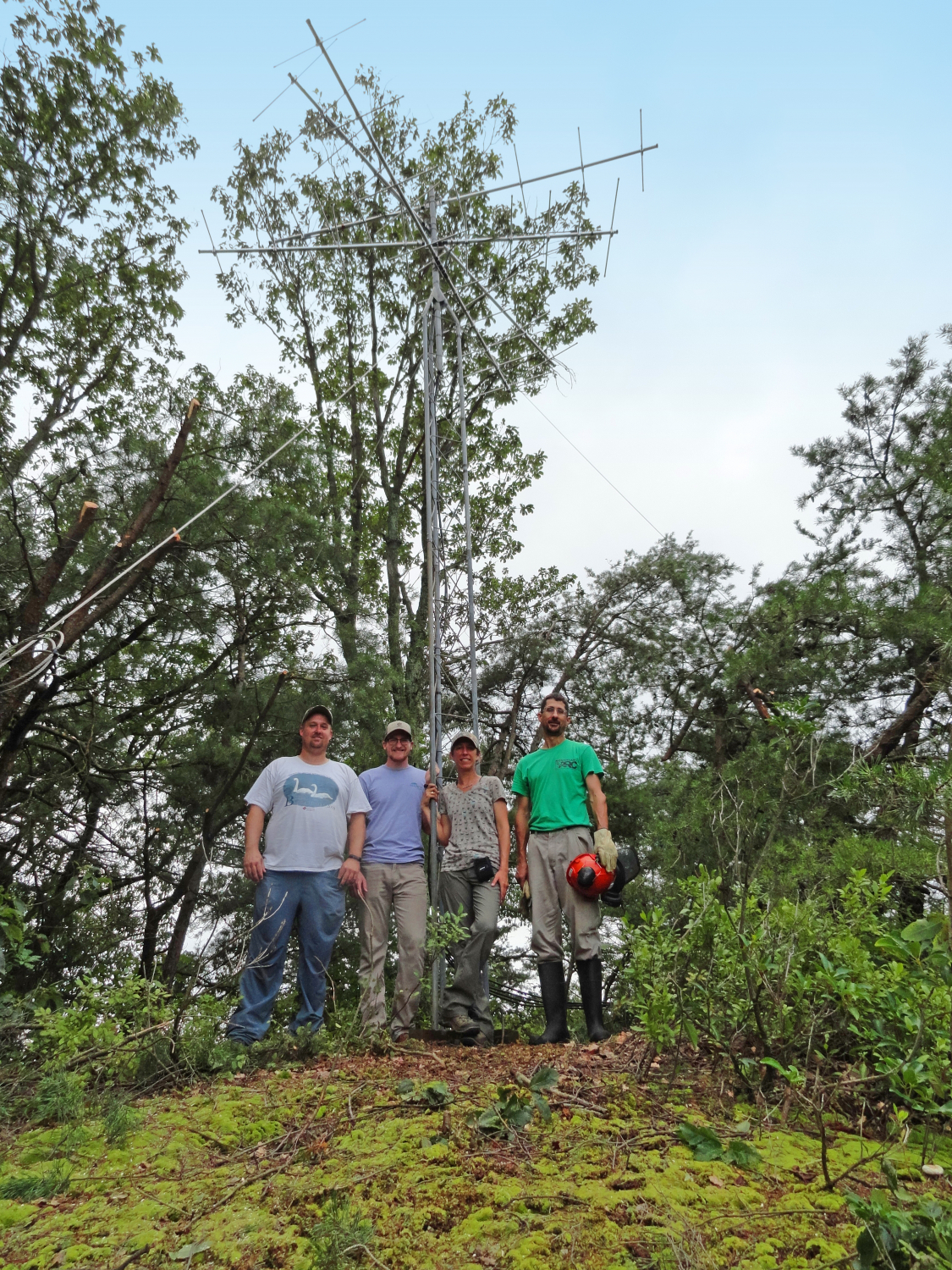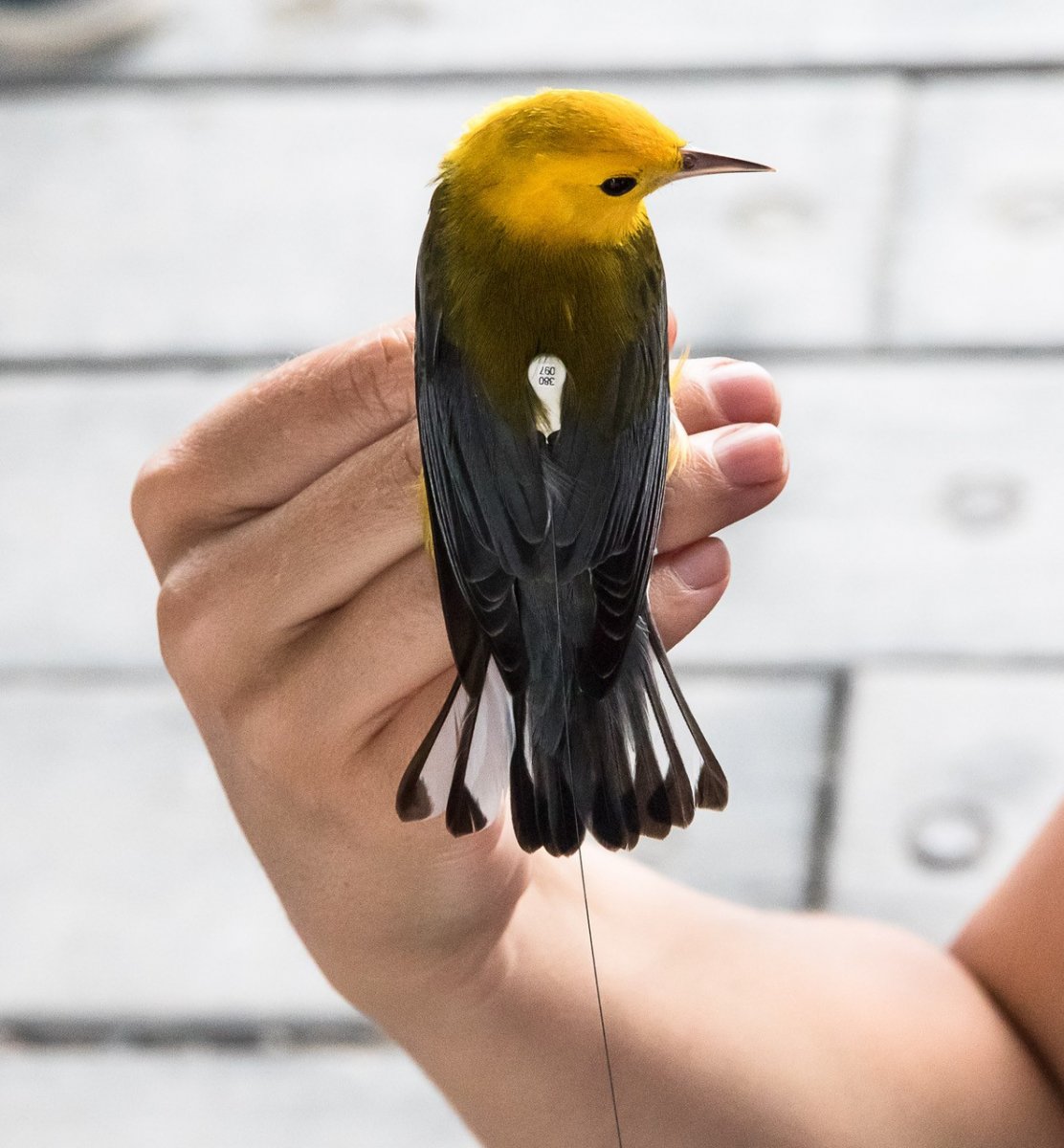First State-wide Motus Array Will Help Provide Some Answers
The Northeast Motus Collaboration (NMC) is a partnership that was organized to fill a gap of Motus receiver stations in the Northeastern United States. The NMC is comprised of Willistown Conservation Trust, the Ned Smith Center for Nature and Art In Dauphin county, and Project Owlnet, headed by Lisa Kiziuk, David Brinker, and Scott Weidensaul respectively.
Fueled by an unparalleled passion for birds, a remarkable team assembled by the NMC completed the first state-wide array of receiver stations in Pennsylvania this past July, constructing 18 towers in 17 days. The network promises new hope for scientists who are working to save declining bird populations. And now that the state-wide array is in place, conservationists, students, and citizens can look forward to a plethora of eye-opening new data about where and which species are migrating through Pennsylvania. The information will help both bird and land conservation organizations like the Trust learn which places are most critical for birds’ survival and most worthy of protection.
The team’s response to the challenges presented by the installation of the towers is an extraordinary story of resilience, persistence, technical problem-solving ability, and physical endurance. Each tower had its own unique set of challenges, as the different installation sites included fire towers, rooftops, mountain tops, meadows, a greenhouse, and a cell phone tower. The installation tested the team’s mechanical, electrical, computing, solar, and crane-renting skills, just to name a few.
The project began with hundreds of deliveries from Amazon arriving at the Trust’s office almost daily beginning in June. All of the pieces and parts for the 18 towers were gathered in the tractor shed at Rushton Farm where the team began sorting through the labyrinth of boxes and crates and mapping out their plan of attack across the state of Pennsylvania. “As prepared as we thought we were, almost every tower required some piece of hardware that we did not already have in our kit,” shares Todd Alleger, one of the members of the technical team. “From bedrock to soft soils, we saw every site condition imaginable, and now we are experts in installing a tower using something appropriately called a duckbill anchor,” reports Alison Fetterman, the team’s project coordinator.
Viewing tools and applications that display the data gathered at Motus receiver stations are continuing to evolve, and we look forward to sharing them via our website as soon as they become available. In the meantime, visit motus.org and zoom in on the Motus Network map and Explore Data/View Tracks sections to see some of the migration data gathered to date.
 Ross Wood (Bird Studies Canada), Jon Rice (Carnegie Museum of Natural History), and Alison Fetterman (Willistown Conservation Trust) pose with landowner Jay Drasher alongside the newly erected tower installed at Neversink Mountain Preserve in Berks County.
Ross Wood (Bird Studies Canada), Jon Rice (Carnegie Museum of Natural History), and Alison Fetterman (Willistown Conservation Trust) pose with landowner Jay Drasher alongside the newly erected tower installed at Neversink Mountain Preserve in Berks County.
 Motus technology employs a miniaturized radio transmitter that is attached to a bird’s back. The transmitter emits a pulse that is picked up by any Motus receiver station near where the bird flies. Motus provides bird migration data that is shared with major bird research facilities globally.
Motus technology employs a miniaturized radio transmitter that is attached to a bird’s back. The transmitter emits a pulse that is picked up by any Motus receiver station near where the bird flies. Motus provides bird migration data that is shared with major bird research facilities globally.

